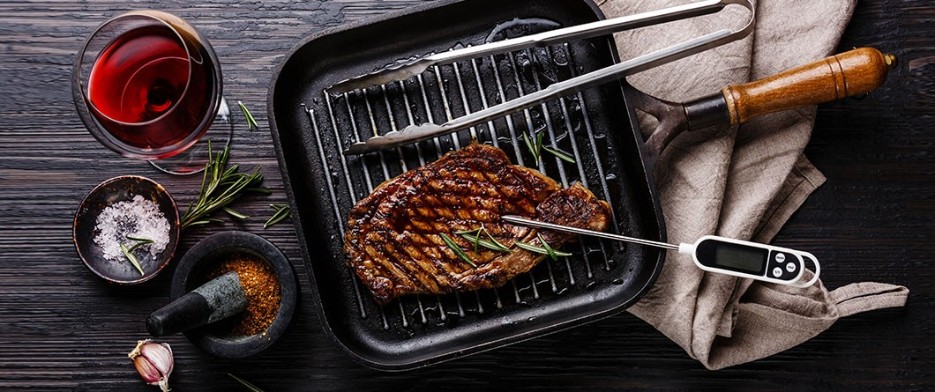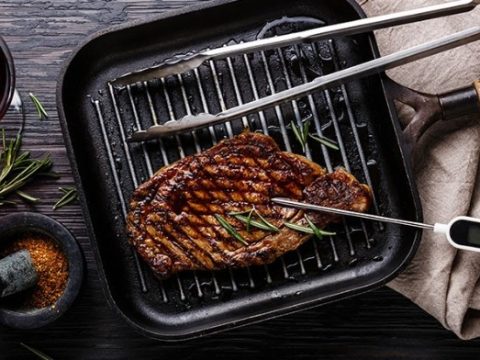How to Use a Meat Thermometer for the Perfect Beef Steak: Tips and Best Practices
Why Use a Meat Thermometer?
Relying on touch or timing alone can lead to inconsistent results. A meat thermometer ensures precision, food safety, and repeatable doneness every time you cook a steak.
Choosing the Right Thermometer
- Digital instant-read: Provides a quick, clear temperature reading within seconds.
- Probe with display: Stays in the meat while cooking and shows the internal temperature in real time.
- Wireless or Bluetooth: Lets you monitor temperature from afar without opening the grill or oven.
Ideal Internal Temperatures for Steak Doneness
| Doneness | Internal Temp |
|---|---|
| Rare | 50–52 °C (122–125 °F) |
| Medium Rare | 55–57 °C (130–135 °F) |
| Medium | 60–63 °C (140–145 °F) |
| Medium Well | 65–67 °C (150–155 °F) |
| Well Done | 70 °C+ (160 °F+) |
Step-by-Step Guide
- Preheat: Sear your steak on a hot grill or pan to form a crust before measuring.
- Insert probe: Push the thermometer into the thickest part of the steak, avoiding bone or fat.
- Read temp: Wait for the reading to stabilize (2–5 seconds for digital instant-read).
- Rest or finish: If under target, return to heat; once done, let the steak rest 5 minutes under foil.
- Clean probe: Wash and sanitize the thermometer probe after each use.
Additional Tips
- Calibrate regularly: Check accuracy in boiling (100 °C/212 °F) and ice water (0 °C/32 °F).
- Carryover cooking: Remember the steak will rise 2–3 °C (5–10 °F) while resting.
- Multiple readings: For thicker cuts, check temperature in two spots.
- Room temperature: Let steaks sit 30 minutes out of the fridge before cooking.
- Quick checks: Only insert the probe briefly to avoid over-drilling the meat.
With a reliable meat thermometer and these guidelines, you’ll hit the perfect steak doneness every time.


